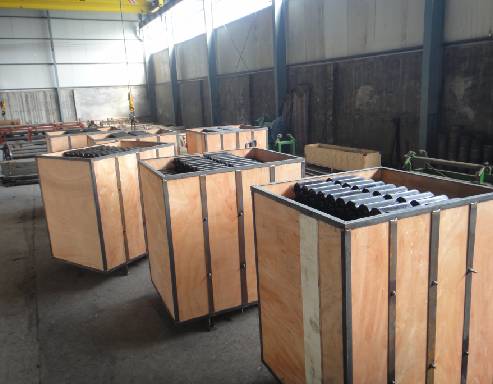 Afrikaans
Afrikaans  Albanian
Albanian  Amharic
Amharic  Arabic
Arabic  Armenian
Armenian  Azerbaijani
Azerbaijani  Basque
Basque  Belarusian
Belarusian  Bengali
Bengali  Bosnian
Bosnian  Bulgarian
Bulgarian  Catalan
Catalan  Cebuano
Cebuano  Corsican
Corsican  Croatian
Croatian  Czech
Czech  Danish
Danish  Dutch
Dutch  English
English  Esperanto
Esperanto  Estonian
Estonian  Finnish
Finnish  French
French  Frisian
Frisian  Galician
Galician  Georgian
Georgian  German
German  Greek
Greek  Gujarati
Gujarati  Haitian Creole
Haitian Creole  hausa
hausa  hawaiian
hawaiian  Hebrew
Hebrew  Hindi
Hindi  Miao
Miao  Hungarian
Hungarian  Icelandic
Icelandic  igbo
igbo  Indonesian
Indonesian  irish
irish  Italian
Italian  Japanese
Japanese  Javanese
Javanese  Kannada
Kannada  kazakh
kazakh  Khmer
Khmer  Rwandese
Rwandese  Korean
Korean  Kurdish
Kurdish  Kyrgyz
Kyrgyz  Lao
Lao  Latin
Latin  Latvian
Latvian  Lithuanian
Lithuanian  Luxembourgish
Luxembourgish  Macedonian
Macedonian  Malgashi
Malgashi  Malay
Malay  Malayalam
Malayalam  Maltese
Maltese  Maori
Maori  Marathi
Marathi  Mongolian
Mongolian  Myanmar
Myanmar  Nepali
Nepali  Norwegian
Norwegian  Norwegian
Norwegian  Occitan
Occitan  Pashto
Pashto  Persian
Persian  Polish
Polish  Portuguese
Portuguese  Punjabi
Punjabi  Romanian
Romanian  Russian
Russian  Samoan
Samoan  Scottish Gaelic
Scottish Gaelic  Serbian
Serbian  Sesotho
Sesotho  Shona
Shona  Sindhi
Sindhi  Sinhala
Sinhala  Slovak
Slovak  Slovenian
Slovenian  Somali
Somali  Spanish
Spanish  Sundanese
Sundanese  Swahili
Swahili  Swedish
Swedish  Tagalog
Tagalog  Tajik
Tajik  Tamil
Tamil  Tatar
Tatar  Telugu
Telugu  Thai
Thai  Turkish
Turkish  Turkmen
Turkmen  Ukrainian
Ukrainian  Urdu
Urdu  Uighur
Uighur  Uzbek
Uzbek  Vietnamese
Vietnamese  Welsh
Welsh  Bantu
Bantu  Yiddish
Yiddish  Yoruba
Yoruba  Zulu
Zulu head pulley
The Importance and Functionality of Head Pulley Systems in Modern Engineering
In the field of mechanical engineering, particularly in the realms of material handling and transportation, the term head pulley holds significant importance. A head pulley is a cylindrical component used in conveyor systems, often positioned at the end of the conveyor belt, where the belt turns around and is redirected back to its starting point. This seemingly simple structure plays a crucial role in the overall efficiency, safety, and effectiveness of various industrial processes.
Understanding Head Pulleys
Head pulleys come in various sizes and styles, depending on their application and the specific requirements of the conveyor system they serve. Typically made from durable materials such as steel, aluminum, or plastic, head pulleys are designed to withstand the immense strain and wear associated with constant movement and heavy loads. Their primary function is to change the direction of the conveyor belt, enabling materials to be carried from one location to another seamlessly.
In addition to their directional functionality, head pulleys are often equipped with additional features that enhance their performance. For instance, some models have built-in drive systems, which can power the conveyor belt directly, while others may be purely passive, serving only as an anchor point for the belt's return loop. The design of the head pulley can also influence friction, with some pulleys featuring rubberized surfaces to provide better grip on the belt.
Applications of Head Pulleys
Head pulleys are utilized across various industries, including mining, construction, manufacturing, and logistics. In mining, for instance, head pulleys facilitate the movement of minerals and materials from excavated areas to processing sites. In manufacturing, they are essential for assembling lines, where products are transported through various stages of production. The logistics sector relies heavily on head pulleys to ensure efficient loading and unloading of goods, thereby reducing turnaround times and increasing productivity.
Moreover, head pulleys are not just limited to horizontal conveyor systems
. They are also integral in vertical transportation systems, where they assist in moving materials upwards or downwards. This versatility makes head pulleys an indispensable component in many operations.head pulley

Maintenance and Safety Considerations
While head pulleys are designed for durability, regular maintenance is crucial for ensuring their long-term performance. Over time, wear and tear can lead to problems such as belt slippage, misalignment, or even pulley failure. Regular inspections can help identify signs of wear such as cracks, surface degradation, or abnormal noise, allowing for timely repairs or replacements.
Safety is another critical aspect to consider in the operation of conveyor systems featuring head pulleys. Proper training for operators is essential to prevent accidents related to equipment failure or operator error. Additionally, installing safety features such as emergency stop buttons and guards can help mitigate risks associated with moving parts.
Innovations in Head Pulley Design
As technology advances, so too do the designs of head pulleys. Innovations like variable-speed drives enable more efficient power management, allowing for better control of material flow and reducing energy consumption. Furthermore, advancements in materials science have led to the development of lighter and more durable pulley designs that can handle heavier loads while minimizing maintenance requirements.
The integration of smart technology and sensors into head pulley systems also represents a significant step forward. By monitoring operational parameters in real-time, these systems can provide valuable data that can be used to optimize performance, predict maintenance needs, and enhance overall safety.
Conclusion
In conclusion, head pulleys are a vital component in the infrastructure of modern industrial operations. Their role in facilitating efficient material transport cannot be overstated, and understanding their functionality is crucial for any engineering professional or facility manager. By maintaining these systems properly and staying informed about the latest innovations in their design and technology, businesses can ensure that they operate at peak efficiency while minimizing safety risks. As industries continue to evolve, the reliance on effective and reliable head pulley systems will only increase, making them an indispensable element of our engineering landscape.
-
Revolutionizing Conveyor Reliability with Advanced Rubber Lagging PulleysNewsJul.22,2025
-
Powering Precision and Durability with Expert Manufacturers of Conveyor ComponentsNewsJul.22,2025
-
Optimizing Conveyor Systems with Advanced Conveyor AccessoriesNewsJul.22,2025
-
Maximize Conveyor Efficiency with Quality Conveyor Idler PulleysNewsJul.22,2025
-
Future-Proof Your Conveyor System with High-Performance Polyurethane RollerNewsJul.22,2025
-
Driving Efficiency Forward with Quality Idlers and RollersNewsJul.22,2025





























